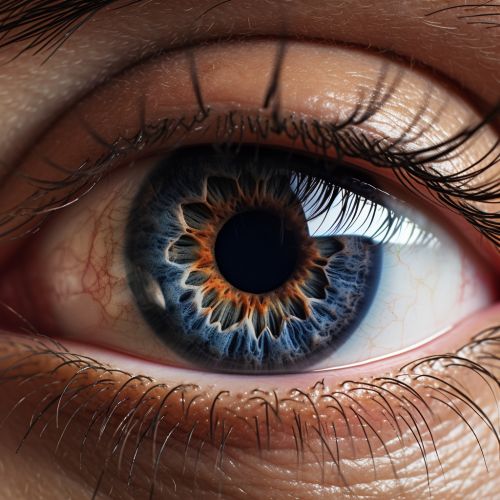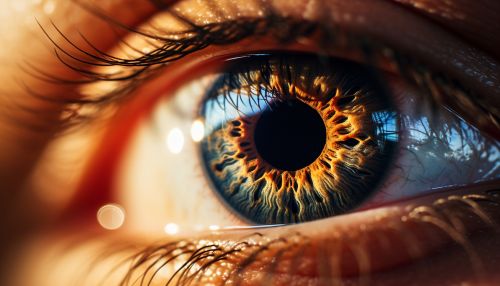Eye damage
Anatomy of the Eye
The human eye is a complex organ designed to gather visual information and transmit it to the brain. The eye is composed of several key components, including the cornea, iris, pupil, lens, retina, macula, and optic nerve.


Cornea
The cornea is the clear, dome-shaped surface that covers the front of the eye. It is the eye's primary light-focusing component, refracting light rays that enter the eye and directing them onto the lens. The cornea also serves as a barrier against dirt, germs, and other particles that can harm the eye.
Iris and Pupil
The iris is the colored part of the eye, and it controls the amount of light that enters the eye by adjusting the size of the pupil. The pupil is the black circular opening in the center of the iris. It expands (dilates) or shrinks (constricts) to control the amount of light that reaches the retina.
Lens
The lens is a transparent, biconvex structure located behind the iris and pupil. It further focuses the light entering the eye onto the retina. The lens changes shape (accommodates) to focus on objects at various distances.
Retina and Macula
The retina is the light-sensitive layer of tissue at the back of the eye. It converts light into electrical signals that are sent to the brain through the optic nerve. The macula is a small area in the center of the retina that contains a high concentration of photoreceptor cells and is responsible for sharp, central vision.
Optic Nerve
The optic nerve is a bundle of more than one million nerve fibers that transmit visual signals from the retina to the brain. The brain then interprets these signals into the images we see.
Eye Damage
Eye damage refers to any injury or condition that impairs the eye's function, potentially leading to vision loss or blindness. Eye damage can occur as a result of physical trauma, exposure to harmful substances or radiation, or certain diseases and conditions.
Physical Trauma
Physical trauma to the eye can result from accidents, sports injuries, or violent attacks. Trauma can cause a range of eye injuries, from minor corneal abrasions to serious conditions like retinal detachment or globe rupture. Immediate medical attention is crucial to prevent permanent vision loss.
Chemical and Radiation Exposure
Exposure to harmful chemicals or radiation can cause significant eye damage. Chemical burns to the eye can occur when a harmful substance comes into contact with the eye. Radiation exposure, particularly ultraviolet (UV) radiation from the sun, can cause conditions like photokeratitis (sunburn of the cornea) and cataracts.
Diseases and Conditions
Certain diseases and conditions can cause eye damage. These include glaucoma, a condition characterized by increased pressure in the eye that can damage the optic nerve, and macular degeneration, a disease that damages the macula and impairs central vision. Diabetic retinopathy, a complication of diabetes, damages the blood vessels in the retina and can lead to vision loss.
Prevention and Treatment
Preventing eye damage involves regular eye exams, wearing protective eyewear when necessary, and maintaining a healthy lifestyle. Treatment for eye damage depends on the cause and severity of the injury or condition, and may include medication, surgery, or vision rehabilitation.
